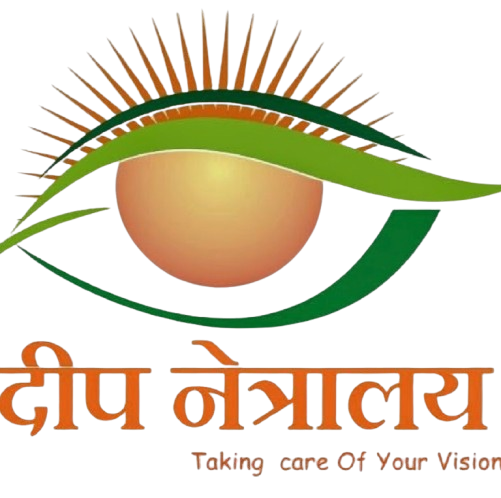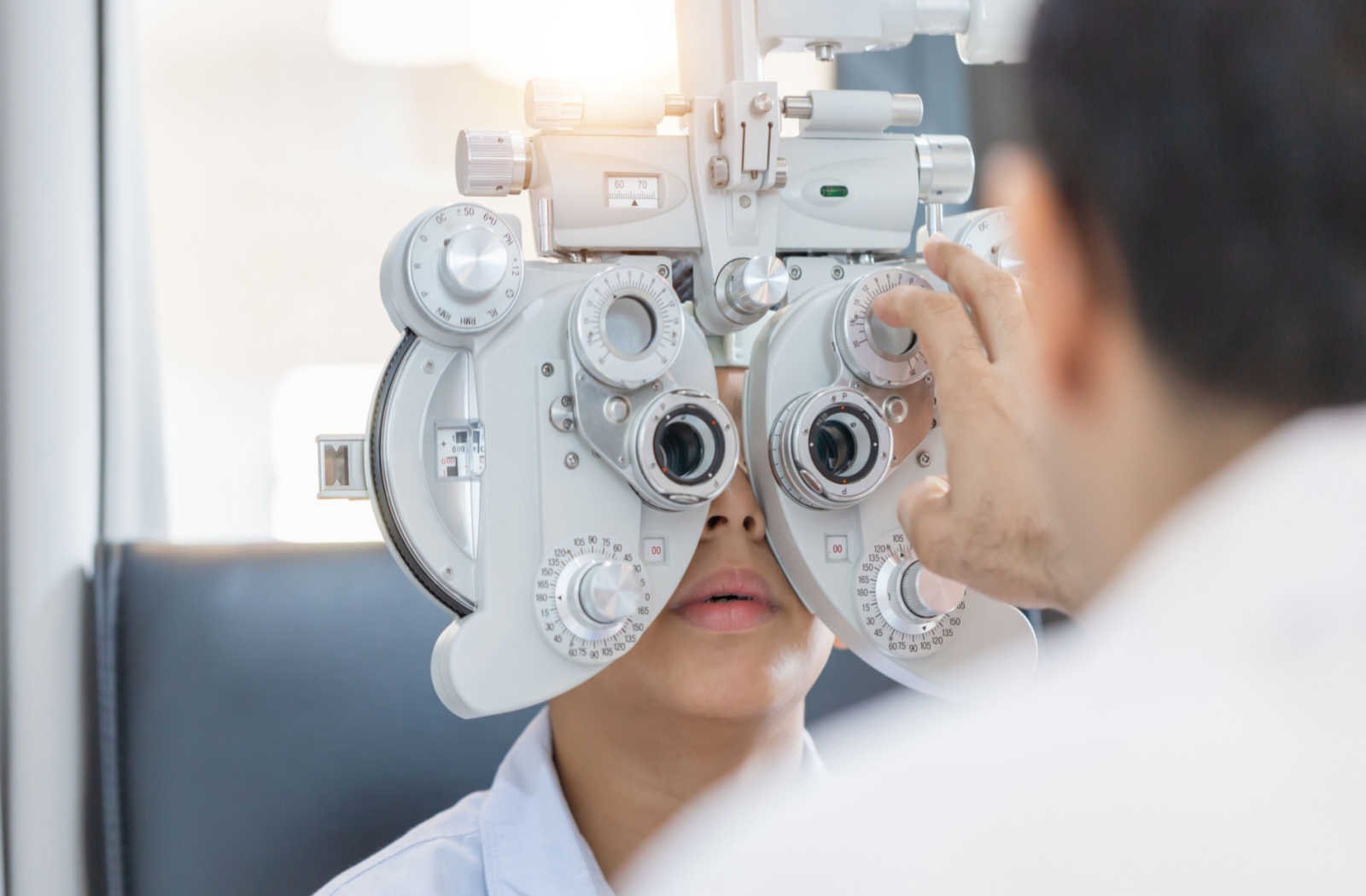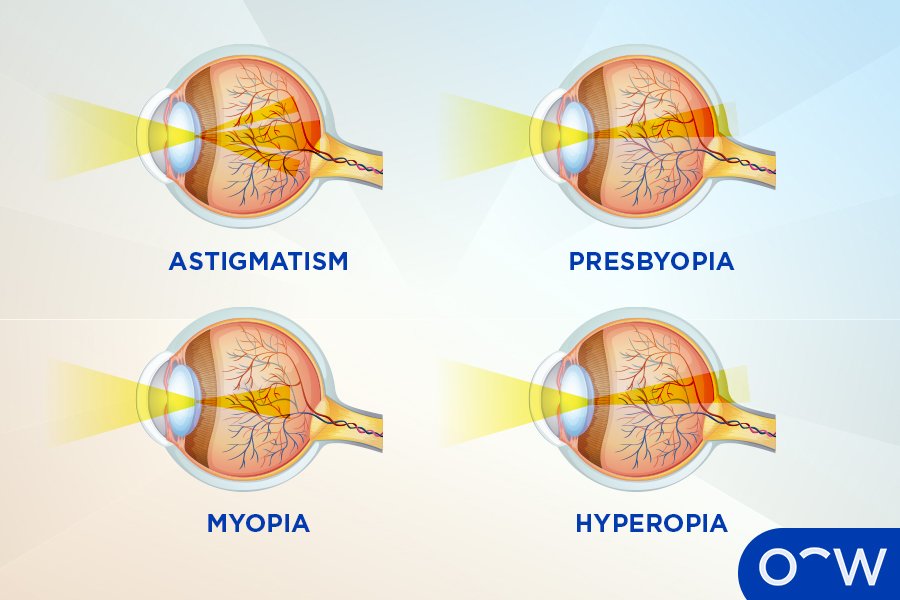Refraction Process in Deep Netralaya
Refraction is the process of determining the correct prescription for glasses or contact lenses based on how light is bent (refracted) as it enters the eye. It is performed using a combination of objective tests and subjective tests.
Objective Tests
These tests provide an initial assessment of the refractive error without the need for patient feedback:- Autorefraction (Autoref):
- This is typically the first step in the refraction process. An autorefractor uses light to measure how the eye focuses light and provides an automatic estimate of refractive error. The result will give a preliminary measurement of spherical, cylindrical, and axis values that indicate if the patient is nearsighted, farsighted, or has astigmatism.
- It’s especially helpful for patients who have difficulty communicating (such as young children or those with disabilities), or when quick assessments are needed.
- Keratometry:
- A keratometer measures the curvature of the cornea. This is particularly important for patients with astigmatism or those requiring contact lenses. Knowing the curvature of the cornea helps in determining the correct contact lens fitting.
- OCT (Optical Coherence Tomography):
- For more detailed eye health assessment, particularly in patients with retinal issues or glaucoma, OCT might be used. While it’s not specifically part of refraction, OCT images of the retina and optic nerve provide valuable insight into how refractive errors might be related to retinal health.
-
Subjective Tests
After obtaining the objective measurements, subjective refraction is done to fine-tune the prescription and ensure the best vision correction:- Phoropter:
- The phoropter is an instrument used during the subjective refraction process. It is a device with multiple lenses that the patient looks through to determine the most appropriate prescription for glasses. The ophthalmologist or optometrist will change the lenses and ask the patient which combination provides the clearest vision. This allows the eye care professional to refine the spherical, cylindrical, and axis values of the prescription.
- Retinoscopy:
- A manual method that is sometimes used in children or patients who cannot communicate clearly. The doctor shines light into the eye and observes the movement of the light reflection off the retina to determine refractive error.
2. Refraction for Specific Conditions
In a comprehensive eye hospital like Deep Netralaya, refraction tests are not just for determining the prescription for glasses or contact lenses, but also for evaluating and managing various eye conditions:- Myopia (Nearsightedness):
- Myopia is the condition where a person can see objects clearly up close, but distant objects are blurry. Refraction is used to determine the degree of nearsightedness and the strength of corrective lenses needed.
- Hyperopia (Farsightedness):
- Hyperopia occurs when distant objects are seen clearly, but close objects appear blurry. Refraction testing helps determine how much positive lens power is needed to correct the condition.
- Astigmatism:
- Astigmatism is caused by an irregularly shaped cornea or lens that results in blurred vision at all distances. Keratometry and subjective refraction help in diagnosing and correcting astigmatism by determining the cylinder power (cylindrical lenses) and axis required.
- Presbyopia:
- This age-related condition affects the ability to focus on near objects due to the loss of elasticity of the lens. Refraction can help determine the need for bifocals, progressive lenses, or reading glasses.
3. Refraction and Surgical Planning
In an eye hospital like Deep Netralaya, refraction also plays a key role in planning for refractive surgery (e.g., LASIK or SMILE):- Preoperative Refraction: Precise refractive measurements are needed before a patient undergoes surgery to ensure that the procedure will be effective in correcting their vision.
- Postoperative Refraction: After surgery, refraction is used to assess the success of the procedure and to determine whether any follow-up treatment, such as enhancement surgery, is necessary.
4. Tools Used in Refraction
- Autorefractor: A device that measures refractive error automatically.
- Phoropter: A device used in subjective refraction to fine-tune prescriptions.
- Retinoscope: An instrument used to perform retinoscopy to determine refractive error, especially in children.
- Keratometer: A device that measures the curvature of the cornea.
- Slit Lamp: Used to examine the front of the eye for signs of diseases that may affect refraction, such as cataracts or corneal abnormalities.
5. Refraction in Routine Eye Exams
Refraction is a standard part of a comprehensive eye exam. It helps in:- Diagnosing refractive errors.
- Tracking changes in vision over time.
- Detecting early signs of ocular diseases that may impact vision (such as cataracts or retinal diseases).
Conclusion:
In an eye hospital like Deep Netralaya, refraction is a core component of eye care, enabling accurate prescriptions for glasses or contact lenses and helping in the early detection and management of various ocular conditions. Using advanced tools like autorefractors, keratometers, phoropters, and slit lamps, the hospital can assess the visual health of its patients comprehensively and provide optimal treatment and care tailored to individual needs. - Phoropter:



